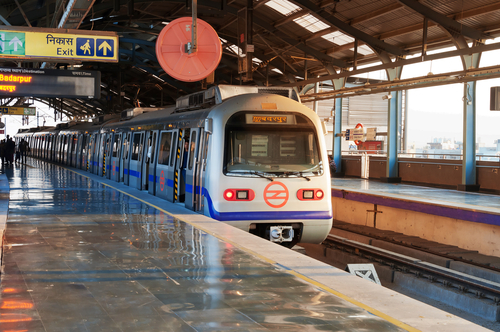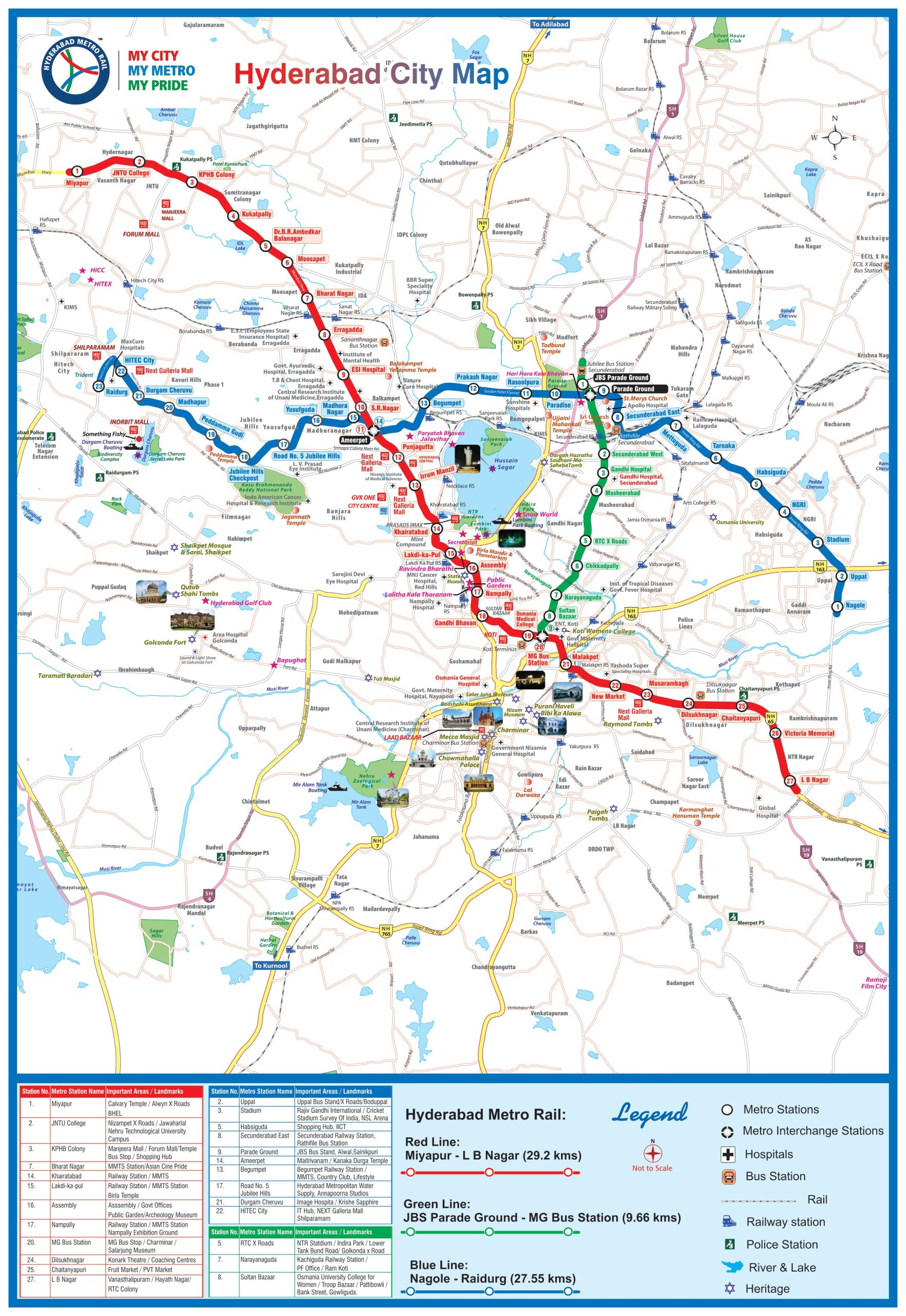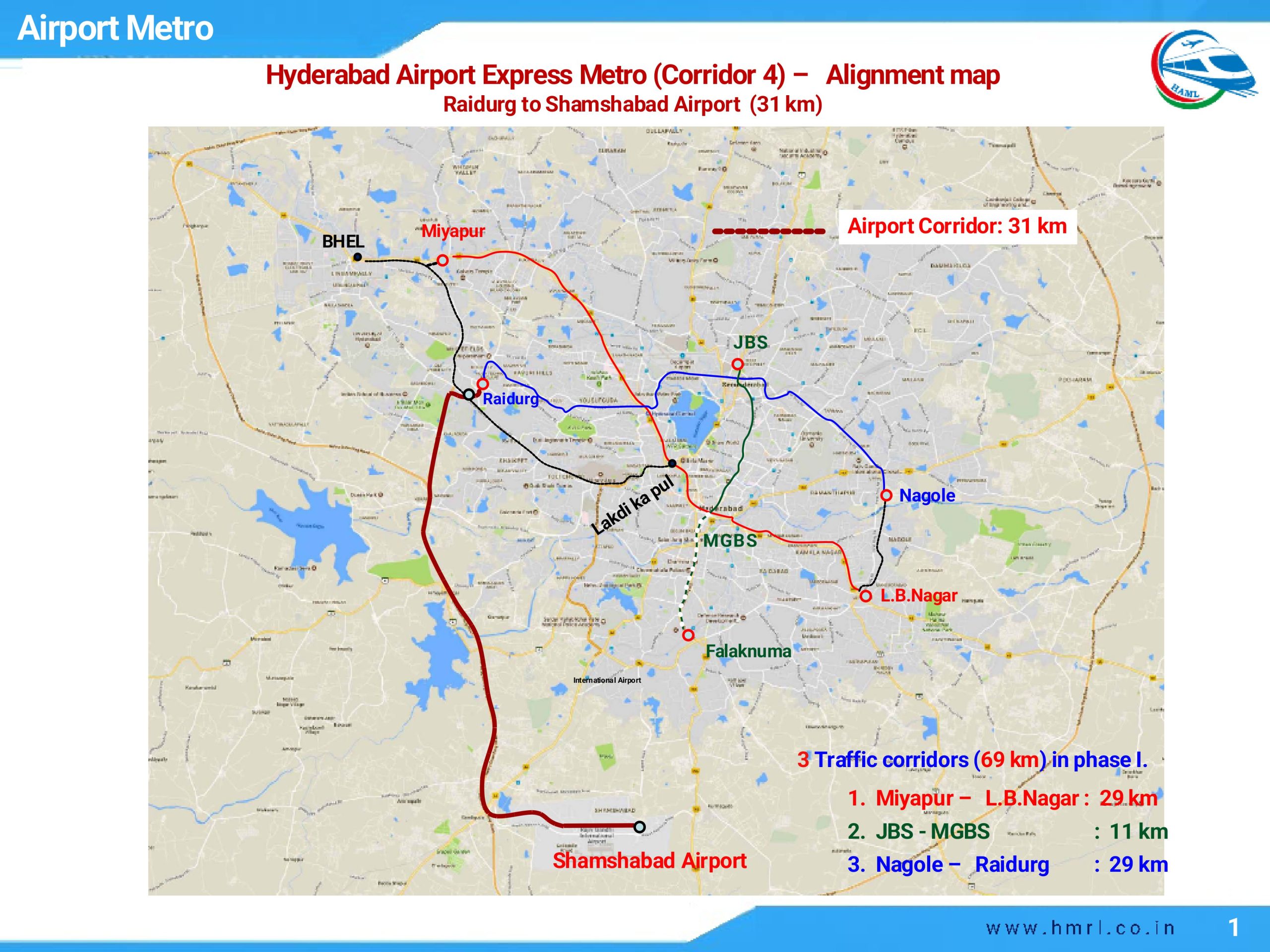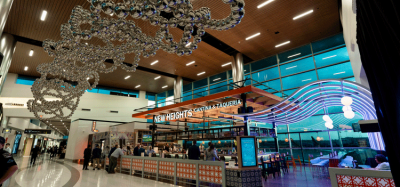Transforming air travel: harnessing multimodal infrastructure to propel the aviation industry
- Like
- Digg
- Del
- Tumblr
- VKontakte
- Buffer
- Love This
- Odnoklassniki
- Meneame
- Blogger
- Amazon
- Yahoo Mail
- Gmail
- AOL
- Newsvine
- HackerNews
- Evernote
- MySpace
- Mail.ru
- Viadeo
- Line
- Comments
- Yummly
- SMS
- Viber
- Telegram
- Subscribe
- Skype
- Facebook Messenger
- Kakao
- LiveJournal
- Yammer
- Edgar
- Fintel
- Mix
- Instapaper
- Copy Link
Posted: 14 August 2023 | Murali Varadarajan | 1 comment
Murali Varadarajan, Chief Strategy Officer of L&T Metro Rail (Hyderabad) Limited, delves into the multifaceted benefits and opportunities presented by Metro Rail Infrastructure for the aviation industry, examining how it can enhance connectivity, optimise operations, and redefine the travel experience.


Enhancing intermodal options at airports.
The future of aviation unveiled through multimodal infrastructure
As the world becomes increasingly interconnected, the aviation industry is faced with the pressing challenge of meeting growing demands for efficient and seamless travel. In this era where time is of the essence, the traditional approach of relying solely on airport infrastructure is no longer sufficient. Enter multimodal infrastructure – a game-changing concept that promises to revolutionise the aviation industry. By integrating various modes of transportation and creating interconnected networks, multimodal infrastructure has the potential to transform air travel as we know it. Fasten your seatbelts as we embark on a journey to explore the boundless potential of multimodal infrastructure in shaping the future of aviation.
The Indian aviation story
India, with its rapidly growing population and expanding economy, requires an efficient and robust transportation system to meet the increasing demand for connectivity. The Indian aviation industry has witnessed significant growth in recent years, and the government has taken various initiatives to further promote connectivity and accessibility. One such initiative is the integration of the Indian metro rail network. Such initiatives aim to enhance connectivity and provide numerous benefits to the aviation sector in India.
In this regard, multimodal infrastructure is the need of the hour for the Indian aviation industry. Multimodal infrastructure refers to an integrated network that combines various modes of transportation, such as air, rail, road, and water, to provide seamless connectivity and improve overall efficiency. Implementing multimodal infrastructure in the Indian aviation industry would bring numerous benefits, including enhanced connectivity, reduced costs, improved passenger experience and sustainable growth.
The metro advantage – seamless integration
The integration of the Indian metro rail network further benefits the aviation sector. Metro rail systems are being developed in major cities across India, providing seamless connectivity and reducing congestion on roads. These metro networks are being extended to connect directly with airports like in Delhi, Hyderabad and Bengaluru, enabling passengers to easily transit between the two modes of transport.
The integration of metro rail and airports has numerous advantages. Firstly, it significantly improves the overall passenger experience by providing a convenient and efficient way of reaching and departing from airports. Passengers can avoid traffic congestion and parking hassles, leading to reduced travel times and enhanced customer satisfaction. For instance, passengers can travel by MRT – Mass Rapid Transit to reach regional airports and then seamlessly transfer to flights, minimising travel time and enhancing overall convenience. This enhanced passenger experience would encourage increased air travel and stimulate growth in the aviation industry.
Secondly, the metro-airport integration reduces the burden on ground transportation modes, such as taxis and buses, by providing an alternative public transport option. This reduces road congestion and also lowers the transportation costs. Integrating various modes of transport allows for more cost-effective options. For example, passengers can opt for MRT to reach smaller airports rather than relying solely on expensive taxi services.
Furthermore, the integration of metro rail and airports supports the sustainability objectives of the aviation sector. By promoting the use of public transportation for airport access, it encourages a shift away from private vehicles, leading to lower carbon footprint and improved environmental performance. Also, by improving regional connectivity, multimodal infrastructure enables economic development in smaller towns and cities, reducing the need for mass migration to metropolitan areas. This balanced growth contributes to a more sustainable and inclusive development model for India.
World example: Hong Kong MRT
The Hong Kong Metro, also known as the Mass Transit Railway (MTR), is a vital transportation system that plays a crucial role in enabling connectivity and contributing to the economic growth of Hong Kong. The seamless integration between the MTR and the city’s airports has resulted in numerous benefits, including improved passenger experience, increased airport utilisation and enhanced economic activity.
One significant way in which the Hong Kong Metro contributes to the growth of Hong Kong’s airport is by providing efficient and convenient airport access for both passengers and employees. The MTR has dedicated airport express lines that connect Hong Kong International Airport (HKIA), located on Lantau Island, with the city centre. This direct connection ensures quick and hassle-free travel, reducing congestion on roads and minimising travel times. As a result, passengers can easily reach the airport, and airport employees can commute swiftly and reliably.
The convenient airport access provided by the Hong Kong Metro is reflected in the significant increase in passenger traffic at Hong Kong International Airport over the years. According to statistics from the Airport Authority Hong Kong, HKIA recorded a steady increase in passenger throughput from 64.3 million in 2014/15 to 74.8 million in 2018/19, showcasing a remarkable 16.3% growth over a five-year period.
The increased passenger traffic at HKIA is closely tied to the accessible and efficient transportation provided by the Hong Kong Metro. With the MTR’s extensive network connecting the airport to various parts of the city, passengers find it easier to travel to and from the airport, leading to a rise in air travel and a positive impact on the aviation industry.
Moreover, the integration between the Hong Kong Metro and the city’s airports has contributed to the overall economic growth of Hong Kong. The seamless connectivity provided by the MTR has facilitated the movement of goods and services, supporting the logistics and cargo operations at HKIA. This, in turn, has bolstered Hong Kong’s role as a major international trade and business hub.
Furthermore, the seamless integration between the Hong Kong Metro and the airports has attracted investment and stimulated economic activities in the surrounding areas. Easy accessibility to the airports has led to the development of commercial and residential properties in close proximity, creating a thriving business environment and supporting the growth of the aviation-related industries. The Hong Kong Airport Core Programme, which includes the construction of the Hong Kong Airport Railway and various related infrastructure projects, has also contributed to job creation and economic stimulus.
Indian example: L&T Hyderbad Metro Rail
Over the past five years, Hyderabad Metro Rail has firmly established itself as a transformative force in the city’s transportation landscape, revolutionising the way people move within Hyderabad. With its extensive network spanning across 69.2km and integrated seamlessly with the city transport (both road and national rail), the metro rail system has not only improved intra-city travel but also left a lasting impact on the overall development and growth of Hyderabad. With a landmark 400 million passengers travelled since its commercial operation in November 2017, the presence of the metro rail system has significantly influenced the socio-economic development and improved quality of life.
Quantifiable advantages are seen in promoting the metro network:
- Enhanced connectivity and reduced travel time and congestion
- With expansion and efficient integration with other modes of transportation, it bolsters micro economic growth and greater employment generation
- Provides a positive impact by improving accessibility to education, healthcare, and other key services for residents in surrounding metro areas
- Densification of real estate around the metro catchment area thereby shaping the urban planning and promoting a sustainable development of Hyderabad.


CREDIT: Hyderabad Metro map
With the recent announcement of development and integration of the Hyderabad Airport Express Metro Rail (HAML) by the state government connecting the existing L&T Metro Rail system, the new project would significantly enhance the connectivity, reduced congestion, and uplift the overall quality of life for residents.
Additionally, its influence on Shamshabad Airport would:
- Make air travel more convenient and accessible for passengers, subsequently bolstering tourism and trade opportunities
- Potentially increase airport footfall and its impact on tourism, trade, and air cargo development
- Environmentally benefit from reduced vehicular emissions and improved air quality in the city
- Address the broader environmental sustainability objectives of Hyderabad Airport Express Metro Rail, including energy-efficient operations and the promotion of public transportation usage.


Conclusion: A new era of aviation connectivity
The implementation of multimodal infrastructure within the aviation industry marks a significant shift towards a more connected and efficient future. By embracing the integration of various modes of transportation, from air to rail, road, and beyond, the aviation industry can unlock a multitude of benefits. Enhanced connectivity not only facilitates seamless travel experiences for passengers, but also opens up new opportunities for airlines, airports, and other stakeholders. From optimising operations and increasing efficiency to reducing congestion and environmental impact, multimodal infrastructure proves to be a catalyst for positive change. As we strive to meet the demands of a rapidly evolving world, let us continue to invest in and explore the vast potential of multimodal infrastructure, ensuring that the aviation industry remains at the forefront of innovation, connectivity, and progress. Together, let us soar to new heights and embark on a future where aviation connects people and places like never before.
Biography


Murali Varadarajan
Murali Varadarajan is currently the Chief Strategy Officer of L&T Metro Rail (Hyderabad) Limited. He leads a diverse team in the areas of ridership growth, fare and non-fare revenue, marketing, M&As and managing the Metro Rail asset concession.
Related airports
Bengaluru International Airport Ltd (BIAL), Delhi International Airport (DIAL), Hong Kong International Airport (HKIA), Hyderabad Rajiv Gandhi International Airport (HYD), Shamshabad Airport
Related organisations
Hong Kong MRT, Hyderabad Airport Express Metro Rail (HAML), L&T Hyderbad Metro Rail



















100% agree dear Murali! Congratulations!